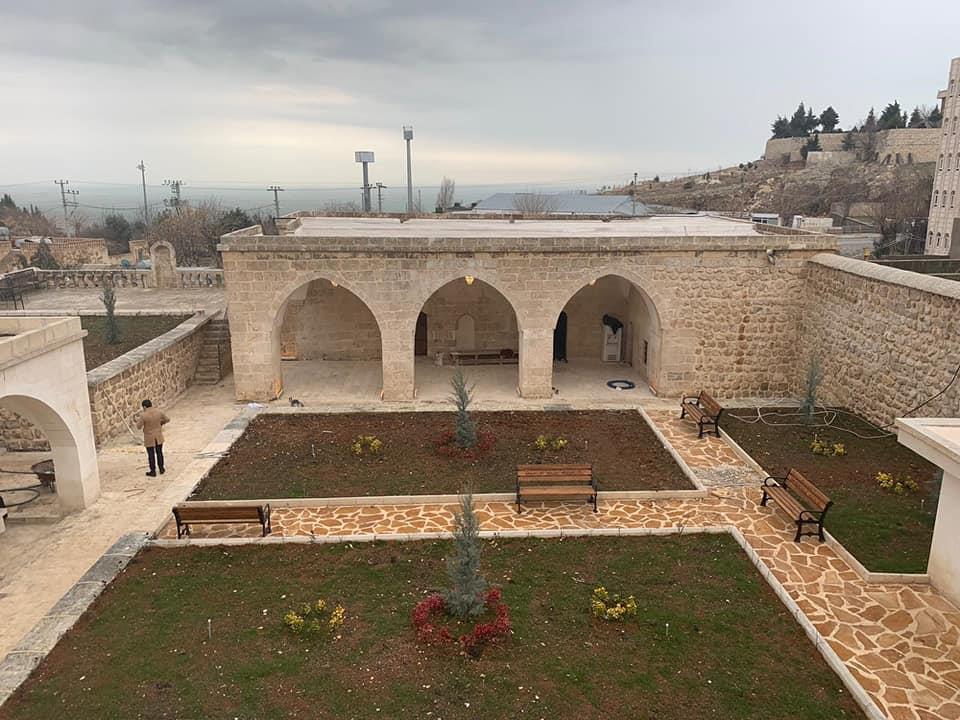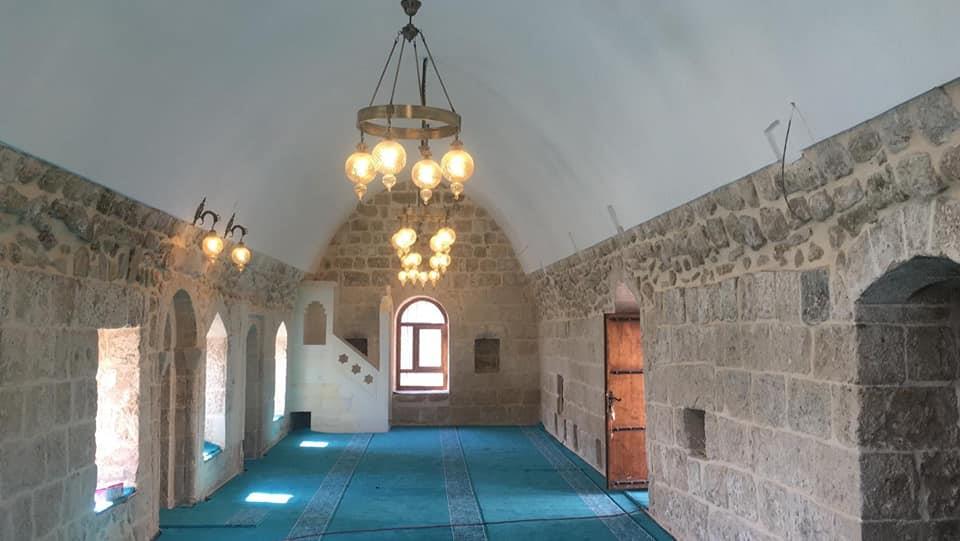YOLBUL
Dinlemek için tıklayın.
Emineddin Mahallesinin güneybatı kesiminde Birinci Artuklu Sultanı Necmettin İlgazi (1108/09-122/23) ile kardeşi Emineddin'e mal edilen bir yapılar topluluğudur. Kaynaklar, inşaatı Emineddin'in başlattığı, ölümünden sonra da Necmettin İlgazi'nin bitirdiğini yazar. Birinci yapı topluluğu maristan (hastane), cami,medrese, hamam ve çeşmeden oluşur. Necmeddin Külliyesi adıyla bilinen ikinci yapı topluluğu ise birbirini kesen tonozlu mekanlar, bir minare kalıntısı ve ek mekan izlerinden ibarettir.
Emineddin Külliyesinin önemi 12. Yüzyılın başında Anadolu’da bilinen ilk külliye olmasından dolayıdır. (Kayseri ve Sivas Selçuklu şifahanelerinden daha erken bir örnektir). Cami yatık bir dikdörtgen alanı kaplar ve topluluğun en güneyinde yer alan caminin anında taş döşeli platform eklinde bir namazgahı vardır. Girişindeki bilgiye göre yapılış tarihi 1093’tür. Külliyenin hamamı, Mardin’de bilinen en eski Türk hamamıdır. 11 metre çapında bir kubbe ile örtülmüş kare bir mekan olan yapının büyük bir kısmı yıkıktır.

Emineddin Complex
Click here to listen.
It is a complex of buildings in the southwestern part of Emineddin District, which was built by the First Artuqid Sultan Necmettin Ilgazi (1108/09-122/23) and his brother Emineddin. Sources claim that the construction was started by Emineddin and completed by his brother Necmettin Ilgazi after his death. The first building complex consists of a hospital, a mosque, a madrasa, a bath and a fountain. The second building complex, known as the Necmeddin Kulliye, consists of intersecting vaulted spaces, the remains of a minaret, and traces of additional spaces.
According to the inscription in its entrance, the complex is built in 1093. The importance of Emineddin Kulliye is due to the fact that it was the first known medical complex in Anatolia at the beginning of the 12th century. (It is an older than the Kayseri and Sivas Seljuk hospitals). The mosque occupies a slanted rectangular area, and the mosque, located in the southernmost part prayers, has a prayer hall in the form of a stone-paved platform. The Turkish bath in the complex is the oldest known Turkish bath in Mardin. A large part of the building, which is a square space covered with a dome with a diameter of 11 meters, is in ruins.

Это комплекс зданий в юго-западной части округа Эминеддин, построенный первым артукидским султаном Неджметтином Ильгази (1108/09-122/23) и его братом Эминеддином. Источники утверждают, что строительство было начато Эминеддином и завершено его братом Неджметтином Ильгази после его смерти. Первый комплекс зданий состоит из маристан, мечети, медресе, бани и фонтана. Второй комплекс зданий, известный как Неджмеддин Куллие, состоит из пересекающихся сводчатых пространств, остатков минарета и следов дополнительных пространств.
Согласно надписи у входа, комплекс построен в 1093 году. Важность Эминеддина Куллие связана с тем, что это был первый известный медицинский комплекс в Анатолии в начале 12 века. (Он старше сельджукских больниц Кайсери и Сиваса). Мечеть занимает наклонную прямоугольную площадку, а мечеть, расположенная в самой южной части молельни, имеет молельный зал в виде мощеного помоста. Турецкая баня в комплексе является старейшей известной турецкой баней в Мардине. Большая часть здания, представляющего собой квадратное пространство, перекрытое куполом диаметром 11 метров, находится в руинах.
ESPANOL
Haga clic aquí para escuchar.
Es un complejo de edificios en la parte suroeste del distrito de Emineddin, que fue construido por el Primer Artuqid Sultan Necmettin Ilgazi (1108/09-122/23) y su hermano Emineddin. Las fuentes afirman que la construcción fue iniciada por Emineddin y completada por su hermano Necmettin Ilgazi después de su muerte. El primer complejo de edificios consta de un hospital, una mezquita, una madraza, un baño y una fuente. El segundo complejo de edificios, conocido como Necmeddin Kulliye, consta de espacios abovedados que se cruzan, los restos de un minarete y rastros de espacios adicionales.
Según la inscripción en su entrada, el complejo fue construido en 1093. La importancia de Emineddin Kulliye se debe a que fue el primer complejo médico conocido en Anatolia a principios del siglo XII. (Es más antiguo que los hospitales Kayseri y Sivas Seljuk). La mezquita ocupa un área rectangular inclinada, y la mezquita, ubicada en las oraciones de la parte más al sur, tiene una sala de oración en forma de plataforma empedrada. El baño turco del complejo es el baño turco más antiguo que se conoce en Mardin. Gran parte del edificio, que es un espacio cuadrado cubierto con una cúpula de 11 metros de diámetro, está en ruinas.